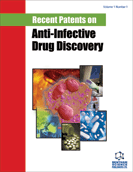Abstract
Abdominal infections are associated with significant morbidity and mortality. Nearly all bacteria causing abdominal infections are derived from the endogenous flora of the alimentary tract. The resulting infection is typically polymicrobial and comprised of both aerobic and anaerobic microbes. They can be classified by their severity as uncomplicated and complicated or by their origin as community or hospital acquired. Escherichia coli and Bacteroides fragilis are the most frequently isolated bacteria in community-acquired abdominal infections. Nosocomial infections typically involve a more resistant flora (e.g. Pseudomonas spp., Acinetobacter spp., Gram-negative bacilli producing extended-spectrum β-lactamases [ESBL], vancomycin-resistant enterococci [VRE] and methicillin-resistant Staphylococcus aureus [MRSA]). Antimicrobial therapy should be guided by microbiological testing and frequently requires other interventions as well. In uncomplicated infections antimicrobial prophylaxis for < 24h may be considered. Patients with underlying or acquired immunodeficiency, i.e. organ transplant recipients and other patients on complex immunosuppressant regimens require special attention and antimicrobial coverage. We discuss the relevant microbiota, a rational diagnostic and therapeutic approach including strategies to handle challenging infections. The application of novel compounds and/or drug classes for abdominal infections such as glycylcyclines (i.e. tigecycline), glycopeptides (i.e. dalbavancin, telavancin, oritavancin), carbapenems (i.e. doripenem), and forth generation cephalosporins (i.e. ceftaroline, ceftobiprole) as well as patents on metalloproteinase and caspase inhibitors, interleukin antagonists, fusion proteins and nitric oxide donators is critically reviewed. The information is summarized in flow charts and algorithms for use in daily clinical practice and the review article also shows the useful information of the patents for the treatment of abdominal infections.
Keywords: Abdominal infections, anaerobic microbes, Escherichia coli, Bacteroides fragilis, Antimicrobial therapy
 45
45





















